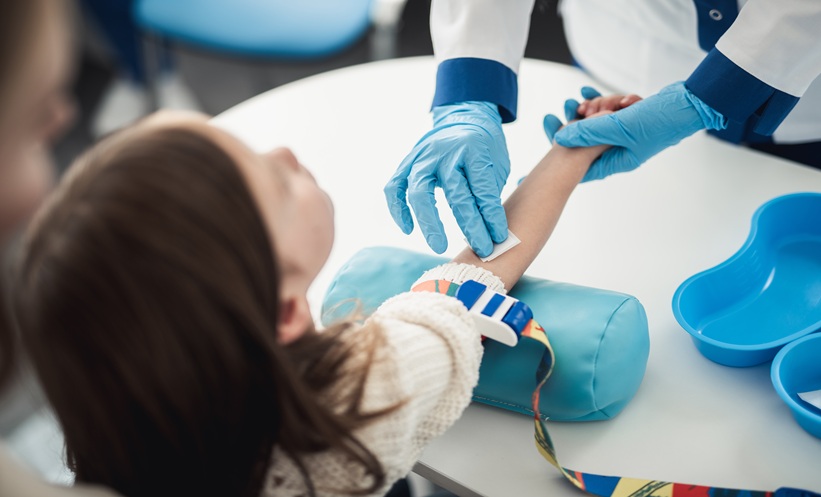Abstract
A 73-year-old female presented with a rare presentation of extrahepatic ductal injuries post-trauma in the form of a right hepatic duct injury. Such injuries go undetected despite normally advised imaging, presenting a few to several days post-trauma. Taking into consideration the risk of biliary leakage, biliary strictures, or recurrent cholangitis, it is imperative to keep a lookout for this differential diagnosis. Given the scarce literature on post-traumatic right hepatic duct injuries, the authors felt that this case could be a beacon in the discussion of the same issue among the surgical community.
Key Points
1. While the primary cause of biliary tract injury is surgical procedures, trauma may also lead to biliary tract injuries through several pathogenic mechanisms including compression which can lead to ruptures.2. The point of bifurcation between the left and right pancreatic ducts and the pancreaticoduodenal junction is the most common anatomical site of post-traumatic biliary tract injury.
3. Prematurely ruling out biliary tract injuries may result in complications, including biliary leakage, biliary strictures, or recurrent cholangitis.
INTRODUCTION
Biliary tract injuries are mainly caused by iatrogenic procedures, which account for a major risk factor, and trauma is a relatively rare cause.1 These usually present with clinical features such as abdominal pain and distension, nausea and vomiting, or fever if biliary peritonitis sets in. An ultrasound or a CT scan is the initial diagnostic modality, depending on the haemodynamic condition of the patient, whereas magnetic resonance cholangiopancreatography and endoscopic retrograde cholangiopancreatography (ERCP) are performed in cases that remain undiagnosed.1 The management of the injuries can be done either endoscopically (the various treatment options include sphincterotomy; nasobiliary tube insertion; or plastic stent placement, according to the European Society of Gastrointestinal Endoscopy [EGSE])2 or surgical ligation, depending on the clinical scenario.1 The authors’ case adds to the scarce epidemiological pool regarding right hepatic duct injuries in cases of blunt trauma.
CASE REPORT
A 73-year-old female reported to the emergency department of a tertiary care institute in Northern India, with a history of assault by a stranger. The patient reported that she was attacked unannounced and had suffered multiple stab injuries to the body and suffered a fall from the chair an hour before the initial presentation to the hospital. There were two stab injuries present in the abdominal region: one above the umbilicus (size: 2.5×0.5 cm) and the other below the umbilicus (size: 3.0×0.5 cm). A laceration was located on the interdigital space between the right hands thumb and index finger. There was active bleeding from the wounds but no other complaints. The patient had a history of hypertension and diabetes but no other history of illnesses, surgery, or trauma.
On examination, the patient was calm, conscious, co-operative, and well-oriented to time, place, and person. The patient had mild tachycardia (120 /min) and normotension (100/66 mmHg), with the other vitals in the normal range. On physical examination, the abdomen was tender and resonant on percussion with normal bowel sounds. Respiratory, cardiovascular, and neurological examinations were normal. After providing first aid to the patient and conducting an abdominal ultrasound according to FAST protocol, which did not yield any significant results, the patient remained hemodynamically stable and was shifted to the operating room for repair of the stab wounds. The patient underwent the advised routine laboratory investigations such as complete blood count, renal function test, liver function test, electrocardiogram, and more. The results were insignificant, and the patient was kept under observation.
On the second-day post-operation, an oral contrast CT abdomen and pelvis was advised, which was normal and showed no visceral injury. The patient’s condition was improving well until three days after the operation, when the patient reported diffuse pain, guarding, and distension in the abdominal region. There was a greenish-yellow discharge on the dressings, which was further expressed by applying pressure to the abdomen or on exertion by the patient. The fluid was confirmed to be biliary in origin on complete biochemical analysis.
A circumferential laceration in the right bile duct was seen on ERCP. The patient was taken to the operating room for exploratory laparotomy and duct repair through a duct-to-duct anastomosis. A drain was placed in the abdominal cavity to monitor any further leakage of fluids and the patient was observed over the following week. The patient’s health gradually improved, and the patient was discharged five days after their operation.
DISCUSSION
Surgical procedures are the leading cause of biliary injuries, while abdominal trauma holds a much less proportion of the pathology. There have been various pathophysiological mechanisms proposed for traumatic biliary tract injuries such as the compression of portions of the extrahepatic bile ducts against the vertebral column or the liver; the compression of a full gallbladder against the liver, hence leading to a blowout rupture of the biliary tract; or the application of non-uniform shearing forces on the biliary system, ultimately producing the same injuries.3 As the authors’ case was the result of assault and an associated fall, they believe that the most probable mechanism for the right hepatic duct could have been the non-uniform shearing forces.
The most common anatomic locations of traumatic biliary injuries are the origin of the left hepatic duct; the point of bifurcation of the left and right hepatic ducts and the pancreaticoduodenal junction.4 Pereira et al.5 conducted a systematic review of a total of 66 cases of traumatic bile duct injuries. They reported that complete transection of the common bile duct (suprapancreatic and intrapancreatic) were the most common injuries reported followed by partial laceration of the left hepatic duct; partial laceration of the right hepatic duct; and complete laceration of the right hepatic duct.5 What makes the authors’ case rare was an isolated laceration of the right hepatic duct, which is usually protected in patients post-trauma due to the duct being located deeper below the liver.1
Extrahepatic bile duct injuries due to trauma may generally go unnoticed in the initial period and be diagnosed in the later part of the clinical course of the patient.1 Zago et al.6 reported two cases of traumatic biliary duct injuries. One was diagnosed as left hepatic duct injury on the sixteenth day after a motor vehicle collision, while the other patient suffered from multiple lacerations of the extrahepatic biliary duct after a fall from a height of 7 m and was diagnosed at the time of laparotomy.6 In comparison, the suspicion of biliary tract injury started on the third day post-trauma in the authors’ patient, based on the presence of biliary discharge on the dressings. The diagnosis and treatment of a patient developing a biliary injury broadly depends on the haemodynamic state of the patient, with the patients who are haemodynamically unstable generally getting diagnosed earlier compared with patients who are haemodynamically stable, like in this case.
On ERCP, right hepatic duct injury without continuity associated with bile leak was seen, so the authors arrived at a diagnosis of a circumferential right hepatic duct injury. As the right hepatic duct injury was circumferential, repair through endoscopic stenting, a procedure which is utilised only for partial lacerations, was not possible. The patient had recently undergone a penetrating stab wound to her abdomen, which was repaired. As a result of the recent abdominal surgery, a laparoscopic procedure was considered out of the question and the duct-to-duct anastomosis for the right hepatic duct injury was completed through open surgery instead. A monofilament interrupted 5-0 prolene suture was used.
The authors’ case suffered a laceration of the right hepatic duct, which itself is a rare presentation amongst the various extrahepatic ductal injuries post-trauma. The absence of any significant features on the CT scan of the abdomen on the day after the initial trauma did not rule out biliary tract injuries in this case. So, despite adequate imaging, one should always keep a differential diagnosis of biliary tract injury in the back of one’s mind as the failure to do the same might result in the development of various complications such as biliary leakage, biliary strictures, or recurrent cholangitis.7







